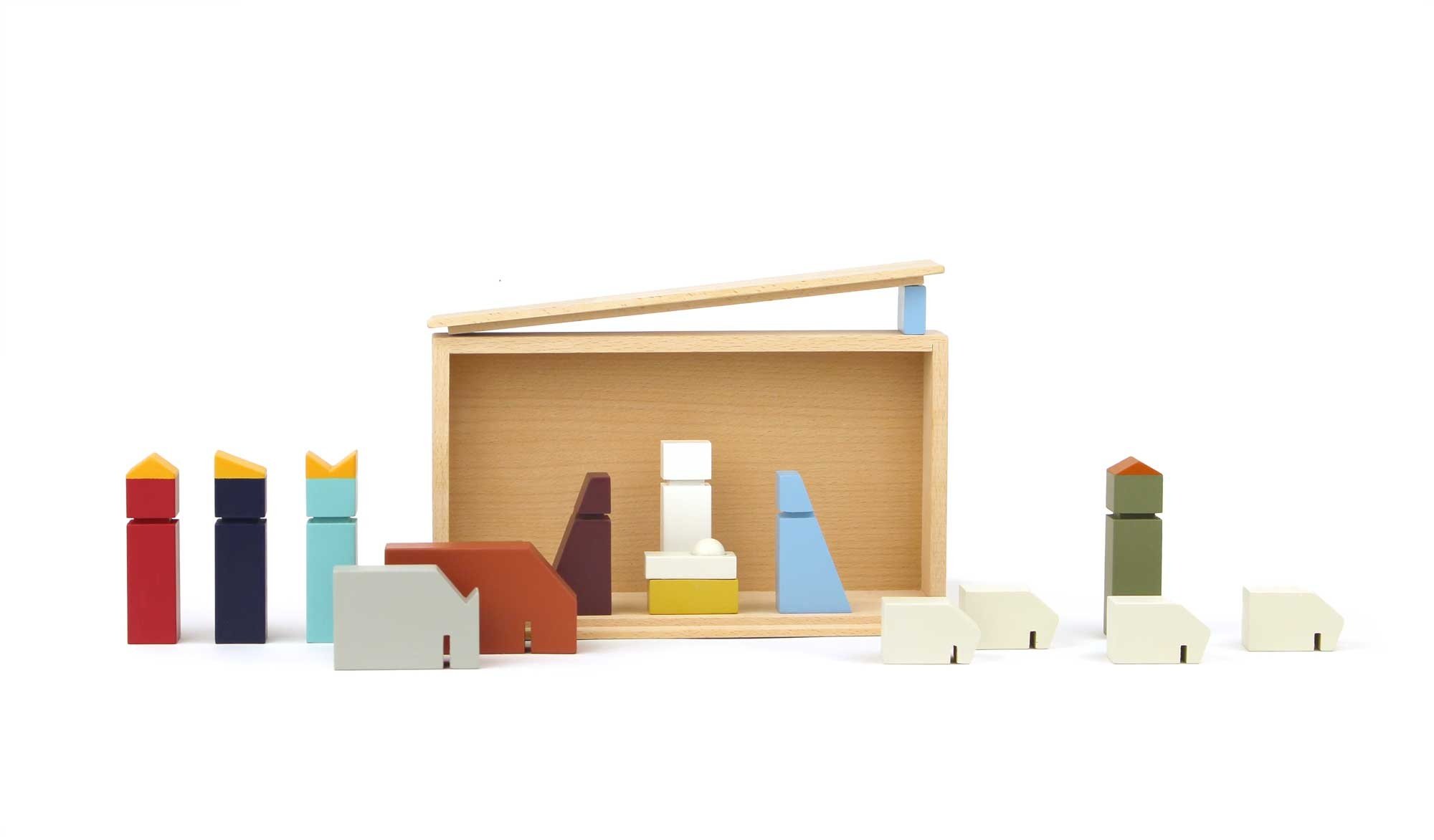It is almost the time of the year to set up your nativity scene!
It is almost the time of the year to set up your nativity scene!
Setting up a nativity scene, also known as a crèche or manger scene, can be a meaningful way to celebrate the birth of Jesus during the Christmas season.
Nowadays there is a wide choice of nativity scenes in different styles, from classic, vintage, to modern and minimalist nativity scenes.
How to set up a Nativity Scene?
Here are some steps you can follow to set up a nativity scene:
Nativity figures: These typically include Mary, Joseph, the baby Jesus, the shepherds, the three Wise Men, angels, and various animals like sheep, cows, and donkeys.
Stable or setting: if you don't own a nativity scene, this can be a small wooden structure, a cardboard backdrop, or even a simple cloth or paper representing the stable where Jesus was born.
Optional: Additional props like hay, moss, or small decorative elements to enhance the scene.
Choose a Location:
Select a suitable place in your home or yard to set up the nativity scene. It could be on a table, a mantel, a window sill, or even in your front yard (if weather permits).
Arrange the Figures:
Begin by placing the central figures - Mary, Joseph, and the baby Jesus - at the center of the scene, inside the stable.
Position Mary and Joseph close to the manger, with Mary typically on one side and Joseph on the other.
Add Shepherds and Animals:
Place the shepherds around the stable. They can be positioned on the outskirts of the scene, as they were the first to witness the birth of Jesus.
Add the animals around the stable. You can place them on the ground or in a small pen nearby.
Include the Wise Men:
Position the Wise Men a little further away from the stable, as they would have traveled a long distance and arrived after Jesus was born. They can be placed in a different area of the display, gradually approaching the scene.
Place Angels:
If your nativity set includes angels, you can place them near the stable, possibly hovering above to represent their role in announcing the birth of Jesus.
Reflect and Enjoy:
Take some time to reflect on the meaning of the nativity scene and what it represents in the Christian faith. It can be a beautiful focal point for prayer and contemplation during the Christmas season.
Remember, there's no one right way to set up a nativity scene! It's a personal expression of faith and celebration, so feel free to add your own touches and make it special for you and your family.
Nativity scene history
Nativity scenes, also known as creches or manger scenes, have a rich history that spans over a thousand years. They depict the birth of Jesus Christ as described in the Christian Bible and have become a cherished tradition in many cultures around the world.
The origins of nativity scenes can be traced back to 13th-century Italy. St. Francis of Assisi is often credited with popularizing the tradition. According to legend, in 1223, St. Francis visited the town of Greccio, where he was struck by the idea of reenacting the birth of Jesus. He arranged for a live nativity scene to be enacted with real people and animals, set up in a cave to mimic the stable in Bethlehem.
This live nativity scene was intended to bring the story of the Nativity to life for the local population, allowing them to better understand and connect with the biblical account. It was a powerful visual representation of the humble circumstances surrounding the birth of Jesus.
Over time, the tradition of nativity scenes evolved. By the late Middle Ages, craftsmen in Europe began creating three-dimensional representations of the Nativity using various materials such as wood, clay, and metal. These early nativity scenes were often small and intended for private devotion.
During the Renaissance, the depiction of the Nativity became more elaborate and intricate. Artists like Leonardo da Vinci, Michelangelo, and Botticelli contributed to the development of nativity scenes in their paintings and sculptures. These artworks reflected the cultural and artistic sensibilities of the time.
Nativity scenes gained popularity throughout Europe and eventually spread to other parts of the world through trade and missionary activities. Different regions and cultures began to incorporate their own unique elements into the scenes, reflecting local customs and traditions. For example, in some areas, nativity scenes may include figures in traditional clothing from the region.
In the 18th and 19th centuries, the tradition of nativity scenes became especially prominent in Germany, where intricate and beautifully crafted scenes, known as "krippe" or "kripfen," were produced. German artisans developed a wide variety of figurines and accessories to populate these scenes, which often included not only the Holy Family, but also a host of angels, shepherds, animals, and various other characters.
Today, nativity scenes are a cherished part of Christmas celebrations in many parts of the world. They are displayed in homes, churches, and public places during the Advent season, and often serve as a reminder of the spiritual significance of Christmas.
While the basic elements of the nativity scene remain consistent, there is room for creativity and interpretation. Some nativity scenes are traditional and faithful to the biblical account, while others may incorporate contemporary or local elements. Regardless of the specific details, the nativity scene continues to be a powerful symbol of hope, peace, and the birth of Jesus Christ for millions of people around the globe.









